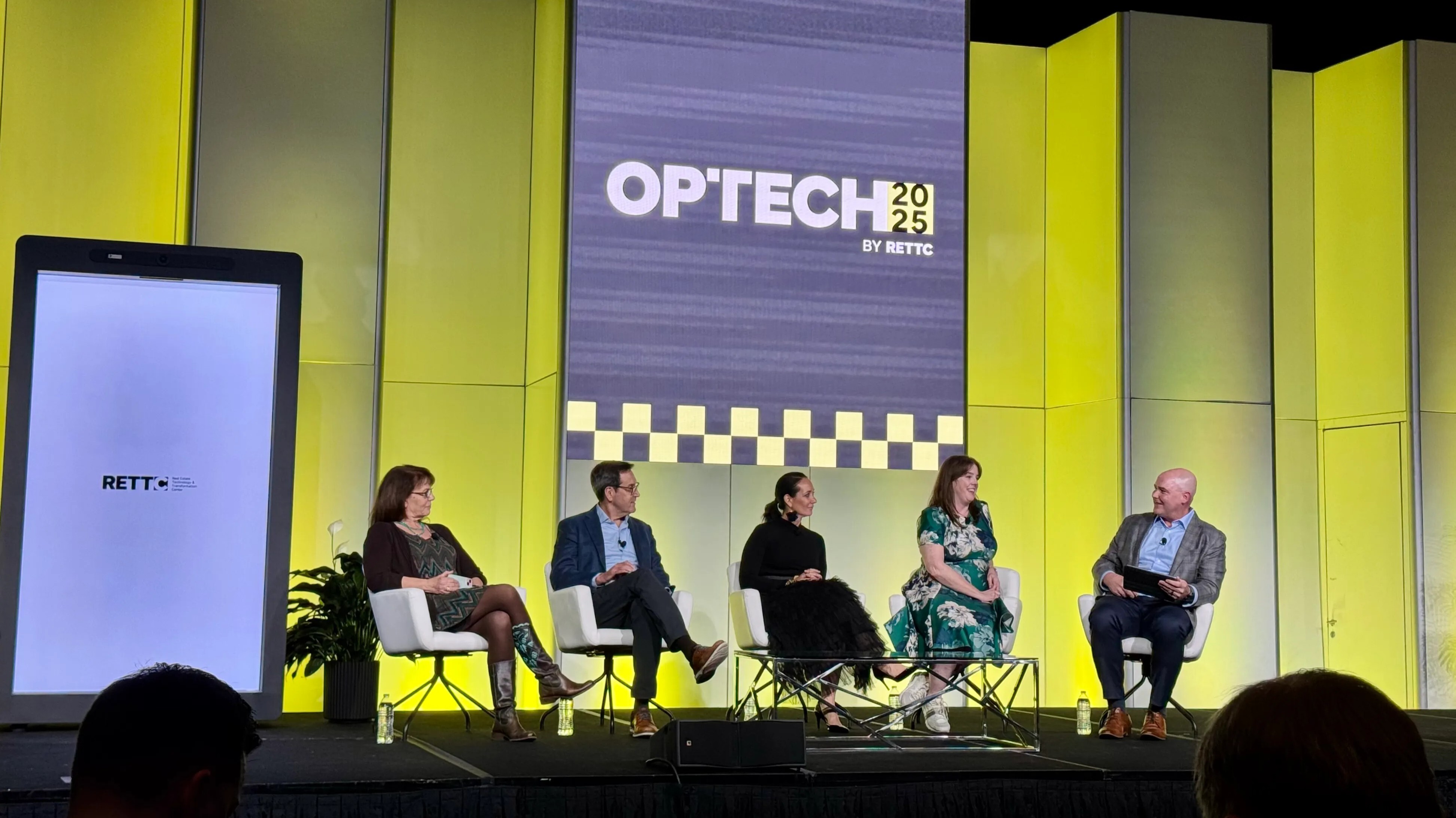
OPTECH 2025 is in the books, and it was its usual, energetic self. In the event's first year as a "members only" event, some things changed, many stayed the same, and it all went by in a flash, as it normally does.
The content program felt different this year. The schedule featured more, shorter sessions and fewer traditional panels, creating a sense of accessibility as more companies got a turn on stage. At the same time, there was no obvious overarching narrative, à la Centralization, AI, etc. The tech is moving, if not the industry zeitgeist at this point.
Tech Stack Talk
Let's start with the big picture. It sounds like a growing number of tech leaders have tech stack consolidation on their to-do lists. It makes sense: it is uncontroversial to say that the industry is buying too many point solutions. The thirty or so that we routinely expect site teams to use is clearly too much if we want them to be used well. It is also making it impossible for tech pilots to work if they involve site team input.
Add to that the increasing functional overlap and it is natural to want to tidy things up. But, as OPTECH conversations disclosed, consolidation is far from straightforward. It seems to be becoming less clear who actually controls technology-purchasing decisions. For example, technology and operations leadership may have a plan for how they will reduce the number of applications, but asset managers may have different ideas.
Conflicting objectives also muddy the water. Operators used to select the tech that drove the greatest improvement in performance for dollars spent. But in the era of operator-funded VC platforms, the goalposts have moved. Operator revenue-sharing partnerships add another dimension that makes it hard to see how operators avoid continuing to accumulate technology. It is a topic will get airtime in the forthcoming research for the next 20for20 Annual Survey.
The Evaluation Paradox
Of course, decluttering a tech stack also depends on being able to make better decisions about tech, and therein lies another interesting paradox on the minds of leaders at OPTECH. The paradox is this: to get better at evaluation, we should put more structure around the process. But the investment in the process often leads to more thorough, but worse decisions.
It works like this: teams invest more time in gathering requirements and making those requirements the basis for a competitive evaluation. Sounds good, but with new tech, stakeholders do not have a deep understanding of the technology and hence the change it can enable. Our natural bias ("functional fixedness") predisposes us to evaluate new tech in terms of what we already understand. The big risk is that the requirement gathering process may or may not result in the right questions.
Next, we move on to the beauty contest. Consideration sets tend to be skewed by relationships, either with sales teams or through the selection of apps favored by industry friends or, increasingly, LinkedIn "influencers." That carries a high risk of evaluating the wrong stuff.
Wrong criteria plus wrong suppliers all but guarantees a bad outcome, no matter how thorough the process is. Without a strong prior understanding of the tech, the evaluators' opinions are framed by the companies that they are meant to be evaluating. A process designed to improve buying habits puts the seller in the driving seat.
Fraud prevention is the best current example of how this process is routinely coming unstuck in multifamily. I have now spoken to many operators who have evaluated and often implemented fraud tools, yet remain unaware of huge differences in approaches between vendors and likely outcomes. It is the main reason why I have been working with leaders to release a series of educational podcasts that address the (big) gaps in industry understanding of this tech.
What you may not realize is cool about AI
AI continues to grow in prominence, and a great deal of thought is being put into it, as we learned at the Wednesday town hall, where the RETTC working group reported out its progress. AI is increasingly ubiquitous on the trade show floor, and those at the forefront of this revolutionary tech are clearly growing.
While there was no obvious prevailing narrative at this show about what is really new, we are starting to see how AI may really start transforming various property-management functions. And some of the most fascinating conversations on the topic were about something that relatively few people are talking about: sentiment.
It was my pleasure to co-present a brand-new white paper on Tuesday morning that used AI to "interview" about 30,000 residents about how they feel about their Wi-Fi. The study (very kindly sponsored by DoJo Networks, Gigstreem and Ruckus) sought to generate new insights, while testing the thesis that AI is vastly better at understanding sentiment than our survey tools are.
The study revealed some fascinating insights. For example, the amount that residents complain about Wi-Fi does not change much, irrespective of which service type they use or how generally satisfied they are. What differs significantly is the nature of the complaints, an insight that is extremely difficult to find through surveys. The paper spells out important implications for business performance, communications and—more broadly—how we think about understanding residents.
It is an area that is set to grow substantially. The more words that AI-enabled chat accumulates, the greater the potential source of insight. Even this brief look provides enough insight to tell us that this will surely become the de facto way of understanding our residents and what they really value.
OPTECH '25 was another trip to Las Vegas in what one hopes will turn out to have been an unusually Vegas-heavy conference year. It was very much worth returning, I thank Kevin Donnelly and his team for delivering another excellent show, and I wish everyone a relaxing Thanksgiving.




